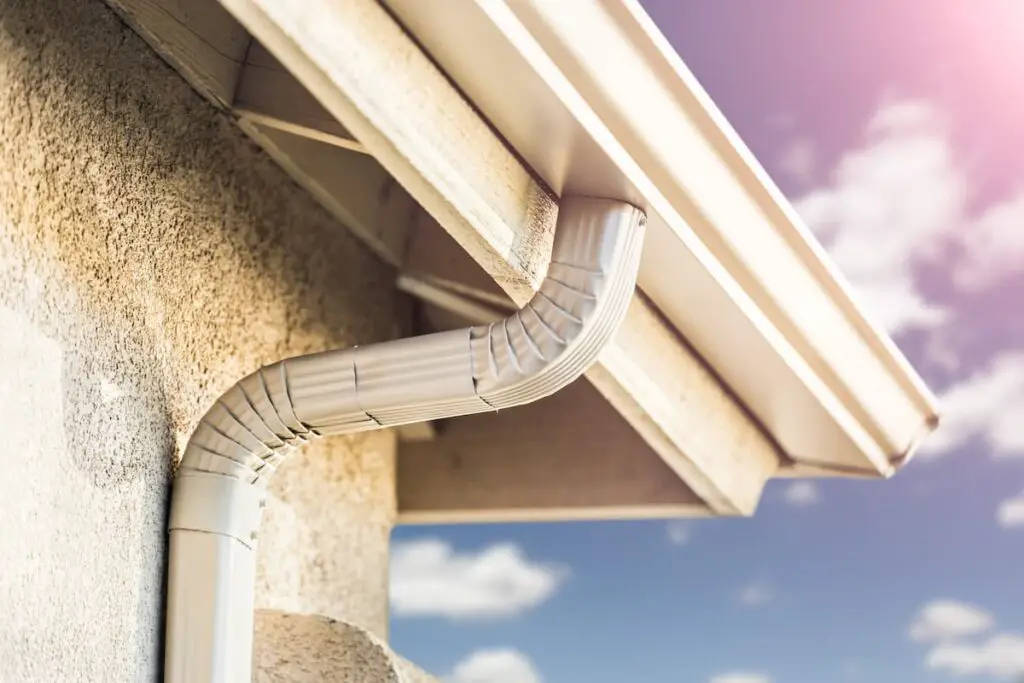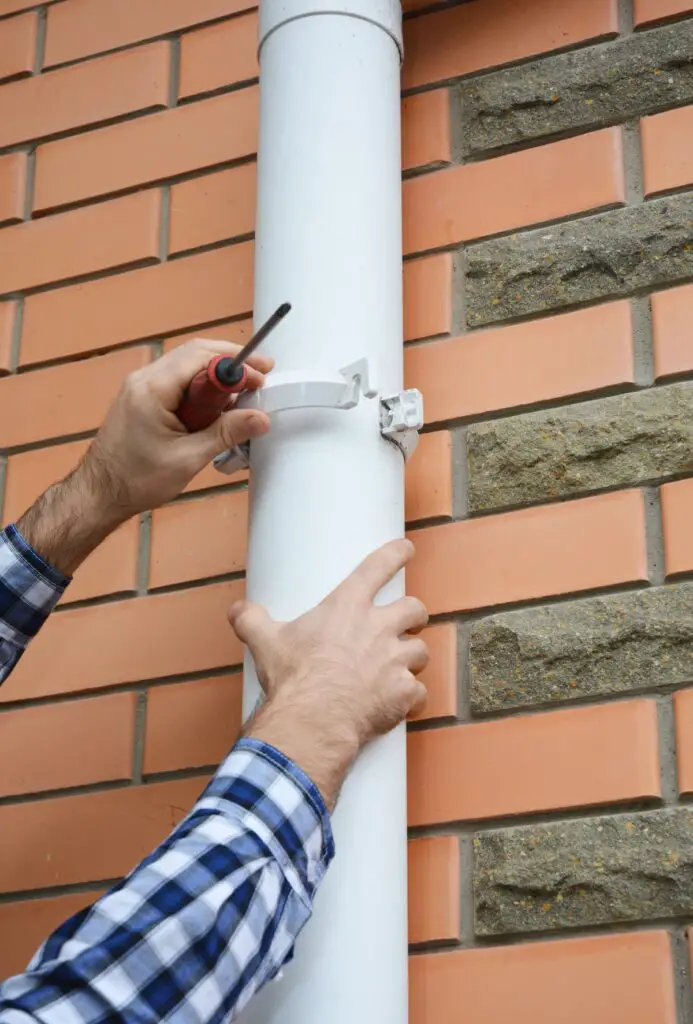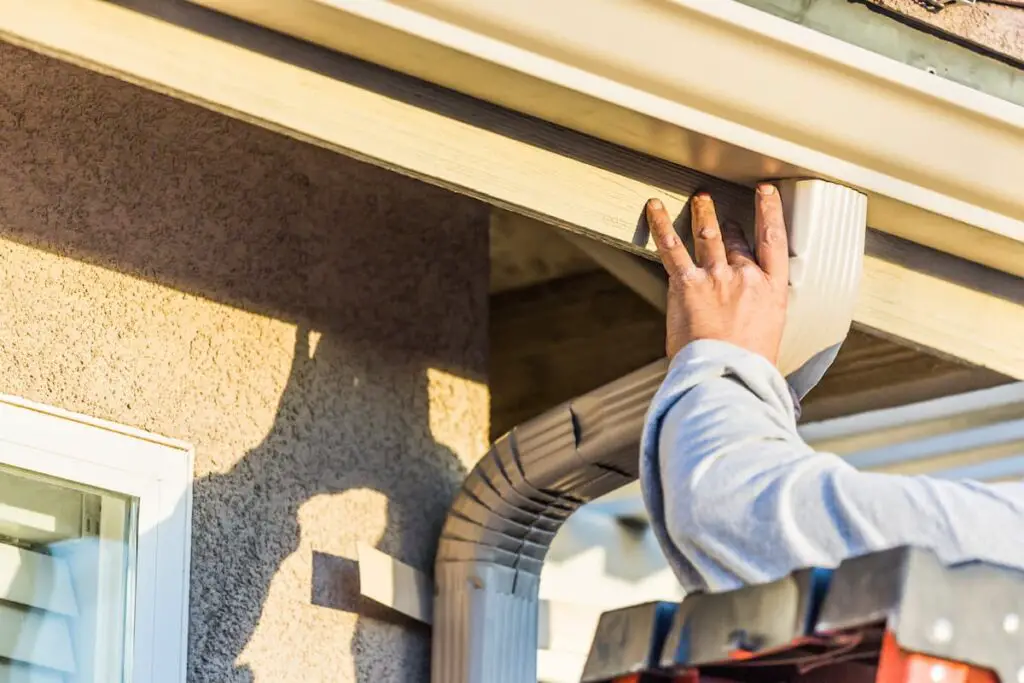As an Amazon Associate, we earn from qualifying purchases. We may also earn commissions if you purchase products from other retailers after clicking on a link from our site.
Homeowners often wonder how to stop downspouts from vibrating in the wind. Rattling downspouts present a couple of problems; they are loud and can damage the siding or break off. Fortunately, you can easily solve this problem.
Here are some ways to stop downspouts from vibrating in the wind:
- Tighten loose downspout straps.
- Insulate the downspout.
- Reset the downspout strap screws.
- Replace the gutter or downspout.
- Realign the gutter and downspouts.
- Replace aluminum downspouts with PVC.
- Use a rain chain.
This article looks at the causes of vibrating downspouts and how to fix them. Read on to learn how to deal with noisy downspouts.

1. Tighten Loose Downspout Straps
One of the most common reasons for downspout vibrations is loose straps. These straps can either become loose over time or due to harsh weather.
If your downspouts are vibrating in the wind, check if the straps are firmly in place first. If not, tighten them and see if that solves the problem.
2. Insulate the Downspout
If tightening the downspout straps doesn’t stop it from vibrating, you can try insulating it. Use a foam wrapping around the downspout to reduce surface vibrations. Such insulation is guaranteed to solve the problem, especially if the downspout is made of metallic material.
3. Reset the Downspout Strap Screws
It’s pretty challenging to strap down a long downspout to keep it from vibrating in strong winds. One fix for this is to reset the downspout strap screws so the downspout is a few inches away from the wall. This way, even if it vibrates, it won’t make as much noise as it would when in contact with the house.

Another approach is the direct opposite to the one above. Tighten the downspout strap screws to firmly fix the downspout to the wall. That way, it won’t have any wiggle room to vibrate in the wind.
However, keep In mind that while the downspout will be completely quiet in the wind, it might be noisy when it rains.
4. Replace the Gutter or Downspout
If you don’t take proper care of your gutters and downspouts, they’ll wear out quickly, which makes them more likely to vibrate in the wind. The best solution for this problem is to fix the worn parts of the gutter or downspout.
However, if a large part of the downspout is visibly worn out or has holes, replacing it with a new unit is usually a better option.
5. Realign the Gutter and Downspout
If your gutter and downspout are misaligned, the downspout won’t be sturdy enough to withstand strong winds. Additionally, when it rains, the water won’t flow smoothly into the downspouts and might start overflowing from the sides of the gutter. The result is an annoying noise during strong winds or heavy downpours.

Realigning the gutter and downspout will turn them into one continuous unit and make them stronger against strong winds, reducing the annoying vibrations.
6. Replace Aluminum Downspouts With PVC
Aluminum downspouts are more likely to rattle in the wind than plastic or vinyl alternatives. If you try the solutions above on your aluminum downspout with no success, you can replace them with quieter materials like plastic, vinyl, or even wood.
Even if your downspouts vibrate in the wind, there won’t be much noise with such materials.
7. Use a Rain Chain
If your downspout is still vibrating in the wind after trying the fixes above, the next best thing would be to replace it with a rain chain. This is a beautiful and creative alternative to traditional downspouts.
Rain chains originated in Japan and have been used for hundreds of years. They’re made of multiple connected pails that form a “chain.” Rain chains are aligned to a gutter just as a downspout would, but since their design makes each link of the chain a separate unit, they’re less likely to rattle in the wind.
Rain chains also allow you to explore your creative potential by designing them. These downspout alternatives offer both aesthetics and function.
Can Strong Wind Damage Your Downspouts?
Strong wind won’t damage your downspouts, but it can cause a rattle in downspouts or in gutters. Rather, the damage comes from debris flown around during a storm. This debris can cause dents in the downspouts and eventually poke holes through the surface.
However, strong winds can cause metal fatigue. The vibrations from the wind weaken the metal, causing cracks in the downspouts and dislodging the brackets and straps holding them in place.
Reasons Downspouts Vibrate in the Wind
Before you try fixing your vibrating downspouts, you need to know what’s causing the vibrations in the first place. There are many reasons why your downspouts could be noisily vibrating in the wind and causing havoc. These include:
- Loose downspout straps: This is one of the most common reasons downspouts vibrate. If the downspouts aren’t held tightly into place, they’ll be vulnerable to strong winds and heavy downpours.
- Strong winds: Sometimes, the winds might just be too strong. If your downspouts are made of light material like aluminum or galvanized steel, they’re unlikely to resist the strong winds and will vibrate noisily.
- Gutter and downspout misalignment: These two pieces should be properly aligned and connected tightly to form one unit. If there’s a loose connection or misalignment, the downspout has more wiggle room to vibrate in the wind.
- Lack of maintenance: Like any other part of your house, the gutters and downspouts require regular maintenance to stay in good condition. If neglected, they’re likely to wear out and get holes. This makes them more vulnerable to strong winds.
To Sum It Up
Downspouts vibrating in the wind can be pretty loud and annoying. These vibrations can be caused by various reasons, including loose downspout straps, strong winds, and irregular maintenance.
To stop downspouts from vibrating in the wind, you can try some of these solutions:
- Tighten loose downspout straps
- Insulate the downspout
- Reset the downspout strap screws
- Use a rain chain
